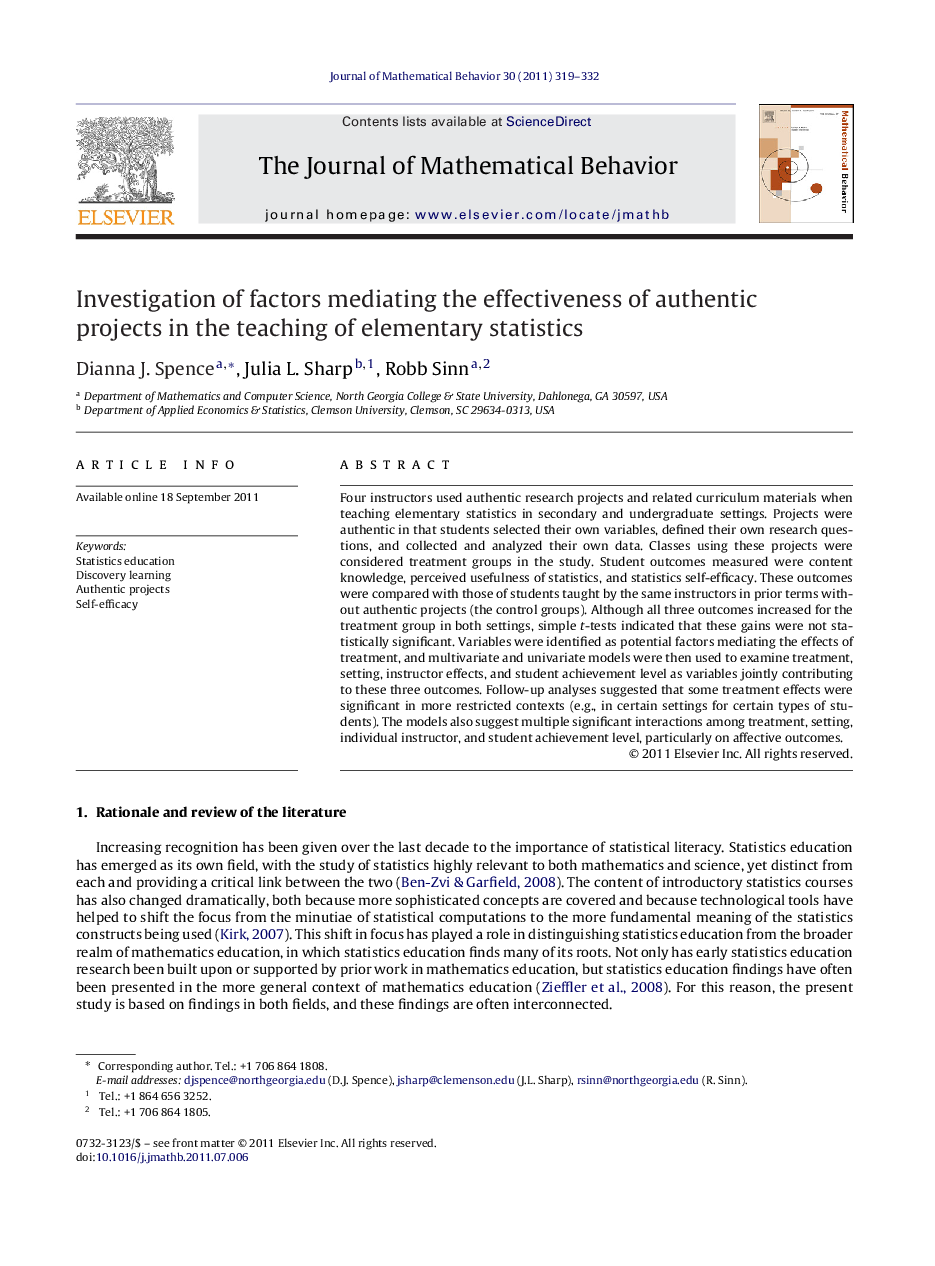| Article ID | Journal | Published Year | Pages | File Type |
|---|---|---|---|---|
| 360755 | The Journal of Mathematical Behavior | 2011 | 14 Pages |
Four instructors used authentic research projects and related curriculum materials when teaching elementary statistics in secondary and undergraduate settings. Projects were authentic in that students selected their own variables, defined their own research questions, and collected and analyzed their own data. Classes using these projects were considered treatment groups in the study. Student outcomes measured were content knowledge, perceived usefulness of statistics, and statistics self-efficacy. These outcomes were compared with those of students taught by the same instructors in prior terms without authentic projects (the control groups). Although all three outcomes increased for the treatment group in both settings, simple t-tests indicated that these gains were not statistically significant. Variables were identified as potential factors mediating the effects of treatment, and multivariate and univariate models were then used to examine treatment, setting, instructor effects, and student achievement level as variables jointly contributing to these three outcomes. Follow-up analyses suggested that some treatment effects were significant in more restricted contexts (e.g., in certain settings for certain types of students). The models also suggest multiple significant interactions among treatment, setting, individual instructor, and student achievement level, particularly on affective outcomes.
